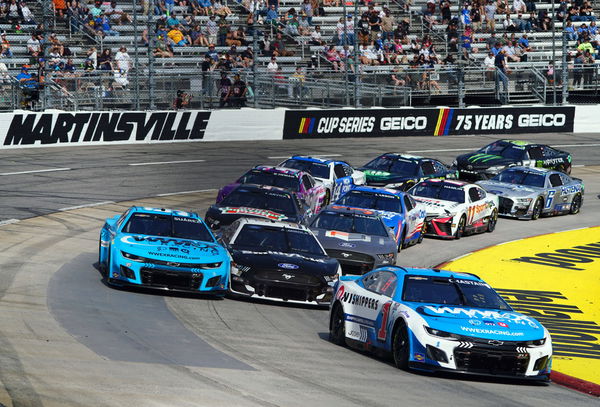
via Imago
NASCAR, Motorsport, USA NOCO 400 Apr 16, 2023 Martinsville, Virginia, USA NASCAR Cup Series driver Ross Chastain 1 leads the pack to a restart during the NOCO 400 at Martinsville Speedway. Martinsville Martinsville Speedway Virginia USA, EDITORIAL USE ONLY PUBLICATIONxINxGERxSUIxAUTxONLY Copyright: xJohnxDavidxMercerx 20230416_jdm_sx1_065

via Imago
NASCAR, Motorsport, USA NOCO 400 Apr 16, 2023 Martinsville, Virginia, USA NASCAR Cup Series driver Ross Chastain 1 leads the pack to a restart during the NOCO 400 at Martinsville Speedway. Martinsville Martinsville Speedway Virginia USA, EDITORIAL USE ONLY PUBLICATIONxINxGERxSUIxAUTxONLY Copyright: xJohnxDavidxMercerx 20230416_jdm_sx1_065
“When you do anything that’s going to compromise the integrity of our sport, we’re going to react.” This was NASCAR’s SVP Elton Sawyer’s reaction to the race manipulation tactics displayed during the playoff race at Martinsville Speedway. The winner-takes-all race was too close to call, and drivers from the Chevy and Toyota camps deployed cheeky tactics to see their respective drivers through to the final race.
Chevrolet’s Ross Chastain and Austin Dillon defended William Byron’s position, whereas Toyota’s Bubba Wallace faked a flat tire to let Christopher Bell through on the final lap. NASCAR certainly wasn’t going to let this slide and hit the leadership group of all three teams involved. A $100,000 fine each for the driver and the race team was brandished by NASCAR. However, it was clear that NASCAR would need to change the race manipulation rules to deter either drivers or OEMs from influencing the outcome of the race.
ADVERTISEMENT
Article continues below this ad
Manufacturers will face consequences for manipulating NASCAR races
Well, given the massive backlash this incident has caused from the racing community, NASCAR has now made some key changes to the rulebook. Sharing an update about the updated race manipulation rulebook change, Jeff Gluck took to X and wrote, “If a manufacturer is found to have violation of the testing policy, wind tunnel policy, team rosters or code of conduct, they could lose: Manufacturer’s Points, and/or loss of wind tunnel hours, and/or RCFD runs, and/or Member ejection, and/or suspension.”
Gluck also shared important changes in the language of the rule that now clearly mentions race manipulation. “Here’s one I just found: Language has changed from ‘takes action with the intent to Artificially Alter the finishing positions’ of a race to ‘attempts to manipulate the outcome.’ So more defined in terms of manipulation, it seems?”
Imagine no Chevrolet cars making it to the finale race of the NASCAR Cup Series. It is indeed damaging for the reputation of a mega automaker. This could’ve been the case if Byron hadn’t been helped by the likes of Chastain and Dillon. However, OEMs can pressure drivers into doing their bidding, and this is one of the primary reasons why such incidents take place.
“It’s not the drivers. Even though I think that would have been the deterrent to park them for a week, that might have been the deterrent to the overall problem, which is the pressure from the top—which is the manufacturer.” This was Dale Jr.’s reaction to the Martinsville chaos, and he wanted NASCAR to take a different route and hold the OEMs accountable for their actions. Well, it looks like finally, NASCAR is taking control of the situation, bringing the OEMs in line.
We knew manufacturer penalties were likely to be implemented after Martinsville last fall, and here they are now.
If a manufacturer is found to have violation of the testing policy, wind tunnel policy, team rosters or code of conduct, they could lose: “Manufacturer’s Points,…
— Jeff Gluck (@jeff_gluck) January 10, 2025
What’s your perspective on:
Are NASCAR's new penalties enough to deter race manipulation, or just a slap on the wrist?
Have an interesting take?
Well, this wasn’t the only welcoming change from the massive overhaul of the rulebook. The new improvised DVP policy is also a massive step up that will encourage teams to give it their all on Sundays.
Trending
No more direct ejection of the race cars from
The Damage Vehicle Policy certainly needed an overhaul in trying not to spoil a driver’s entire week with just one wreck. Ryan Blaney was one of the victims of the sketchy DVP policy, where his No. 12 Ford Mustang was directly taken to the garage after being unable to fire back due to flat tires at Watkins Glen. At Kansas, a similar story unfolded with Josh Berry, who was ruled out of the race on the very first lap with all four tires on his race car going flat.
The playoff race at Talladega further fueled the controversy as the playoff drivers that were caught up in the biggest ‘big one’ were allowed repair work. The likes of Chase Elliott and Chase Briscoe received this special treatment. So it was evident that the DVP policy needed tweaking. With the new rule, the seven-minute clock will be allowed for repairs on the pit road. If the teams are unable to get their car running, they would simply have to go to the garage for additional repairs.
ADVERTISEMENT
Article continues below this ad
One of the most notable: DVP policy is getting an overhaul. No more DVP clock, at least in terms of eliminating a car from the race. Cars now CAN go back to the garage to fix crash damage and then return to the race. If they’re on pit road, they can work until the 7-min clock is…
— Jeff Gluck (@jeff_gluck) January 10, 2025
No DNFs will be rewarded by NASCAR to the teams headed to the garage. If the car is unable to drive off the track to pit road or the garage area and needs a tow, it will be towed straight to the garage area. “No more DVP clock, at least in terms of eliminating a car from the race. Cars now CAN go back to the garage to fix crash damage and then return to the race. If they’re on pit road, they can work until the 7-min clock is exceeded but then need to go to the garage. There’s no clock in the garage.” Jeff Gluck shared this on X.
ADVERTISEMENT
Article continues below this ad
Fans have been demanding common sense and logical changes for the DVP policy, and this change will allow teams an opportunity to at least complete the race on their terms. What are your thoughts on the rule changes? Let us know in the comments below!
Have something to say?
Let the world know your perspective.
ADVERTISEMENT
ADVERTISEMENT
ADVERTISEMENT
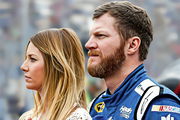
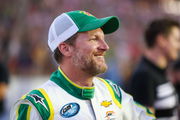
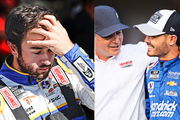
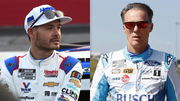
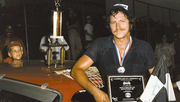

Debate
Are NASCAR's new penalties enough to deter race manipulation, or just a slap on the wrist?